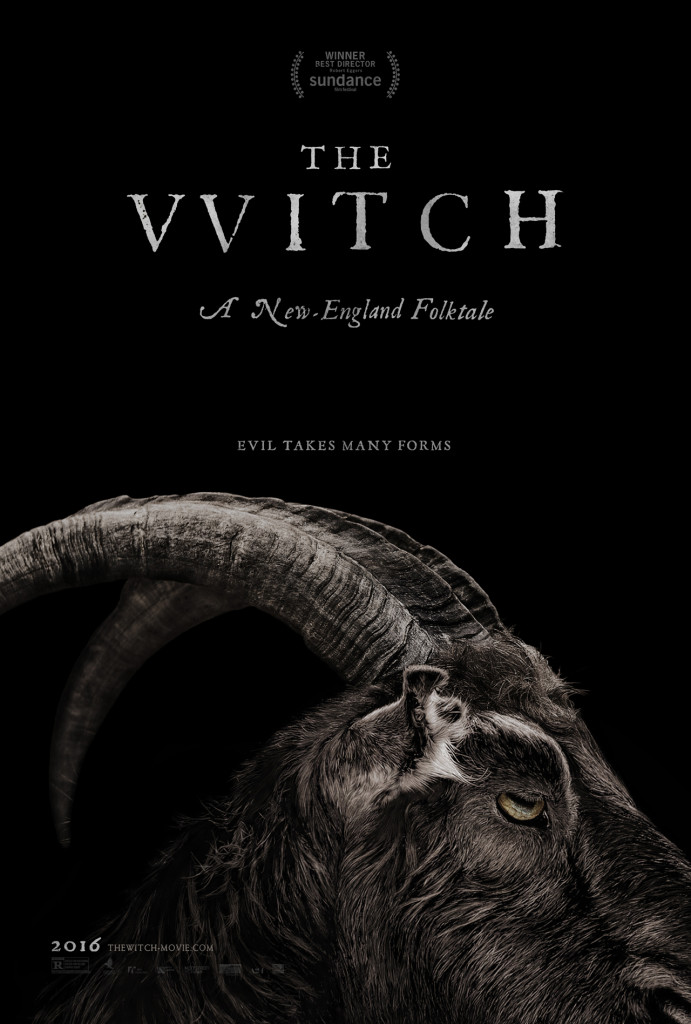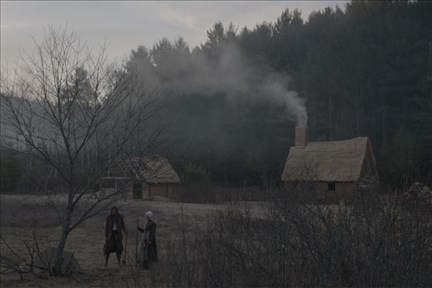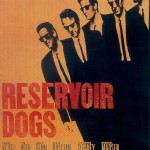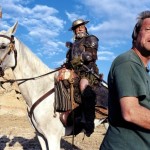“The Witch” is a slow burn of a horror movie, in which something feels off and disturbing almost right away, and the terror builds slowly and the evil permeating the entire film reveals itself gradually. We figure out pretty early on what is happening, but we have no idea the extent of it all until the very end. A story of an early 1600s Puritan family living in the wilderness on the edge of a forest inhabited by something terrible, this is the kind of movie that gets under your skin and creeps you out from within.
William (Ralph Ineson) takes his family and leaves a settlers’ plantation because his religious views were not compatible with the new town’s position on religion, and he takes them out into the wilderness where they find a big open spot next to some ominous looking woods. Soon they have a home and a farm, tended to by William, his teenage daughter Thomasin (Anya Taylor-Joy), his teenage son Caleb (Harvey Scrimshaw), while the mother Katherine (Kate Dickie) takes care of a couple of annoying little twins and their brand new little baby Samuel. One day, Thomasin is out with Samuel watching over him when he gets snatched away from her in less than a second, and his disappearance is sudden and definitive. This baby kidnapping early on sends the family dynamics into an off-kilter direction, with the mom blaming Thomasin and the father wondering if they were simply cursed by a vengeful God unhappy with their sins. Thomasin, for her part, is not sure who to blame, but the family circulated lie that a wolf took the child does not sit well with her because she was there and she knows it wasn’t a wolf. So what could it be? Well, you’ve seen the title of this movie, right?
And the audience isn’t left wondering what happened to the baby because we see, in the darkness of the woods, a decrepit woman of some sort with the child and then sacrificing the child (off screen and implied, thank goodness, cause we don’t need baby dismemberment in movies), and we know this is the movie’s “witch,” though the actual witchy, magical aspects of such a mythic creature is not as clear. And in any case, the existence of this witch in the nearby woods isn’t really the driving force of the story, as the crumbling family is what gets this thing moving forward. With the disappearance and (rightly) presumed death of their youngest child, Katherine is all grief, refusing to sleep, just constantly praying to God for deliverance of any sort, ignoring the rest of the problems they have to deal with, like the fact that their corn crops failed and they are running out of food quickly, and how William, despite having the best intentions, is proving to be a terrible hunter and farmer.
And while Katherine is mourning and William is out with Caleb looking for food, the young twins are left alone with the family’s black goat named Black Phillip, and you better believe we are going to get a bunch of shots and scenes in which suspicion is cast squarely on Black Phillip. Why do the twins like playing with this goat so much? Why does it stare at Thomasin when she questions them? This family, for so many reasons, is simply falling apart at the seams, and they do nothing to stop it. The situation only gets worse when Thomasin and the twins start hurling accusations at each other, claiming the other to be the witch causing so much pain and consternation.
While there are moments and scenes here and there that do use violence and bloodshed, much of the movie’s terror comes from a slow build of anxiety, the knowledge that something terrible is going to happen, but we don’t know what or where it is going to come from or how it will manifest itself. “The Witch” has that feeling of anything being possible, and it is all done in such a way as to elicit a deep seeded feeling of horror when we see things like the reveal of a small shack-like home in the middle of the woods, and how the image of an apple can be so menacing and filled with terrible implications in one particular scene. There is much creeping dread in this film, and instead of jump scares there is the slow realization that nothing is what it seems, and that a great lurking evil can be anywhere at anytime. Why else would we get multiple shots of a wild hare, sitting and staring, close ups of its eyes as it watches the family members, taking in their actions, biding its time. It is just a rabbit. So why is it so menacing?
That is the power of this movie, with a confident and deliberate pace and tone that has more in common with the first 45 minutes of “The Shining” than it has in common with recent popular horror movies like “The Conjuring” and “Insidious” and the whole “Paranormal Activity” series; instead of building up to a series of jump scares, usually consisting of people in lots of make up jumping out of the shadows and popping out from off screen, “The Witch” builds up to its gradual reveal, the truth of what is happening in this story, and how the real implications of what has been happening. You think it will end up being one thing and it turns into something else with clarity and precision, a surprise ending that is also inevitable in hindsight, an ugliness that is almost beautiful in its gracefulness and surety of purpose. In a world in which religion is real and vital and the only thing standing between a person’s survival and suffering, such acceptance of a larger good must also mean the acceptance of a conniving, purpose-driven evil, and keeping the wolves at the door is much harder than saying a few prayers, that’s for sure.



 Bonus Episode – Oscars 2018 Recap
Bonus Episode – Oscars 2018 Recap 2013 Oscar Picks
2013 Oscar Picks Netflix pick for 3/31/14 – ‘Reservoir Dogs’
Netflix pick for 3/31/14 – ‘Reservoir Dogs’ Netflix pick for 3/7/16 – ‘Lost In La Mancha’
Netflix pick for 3/7/16 – ‘Lost In La Mancha’
Leave a Reply
You must be logged in to post a comment.